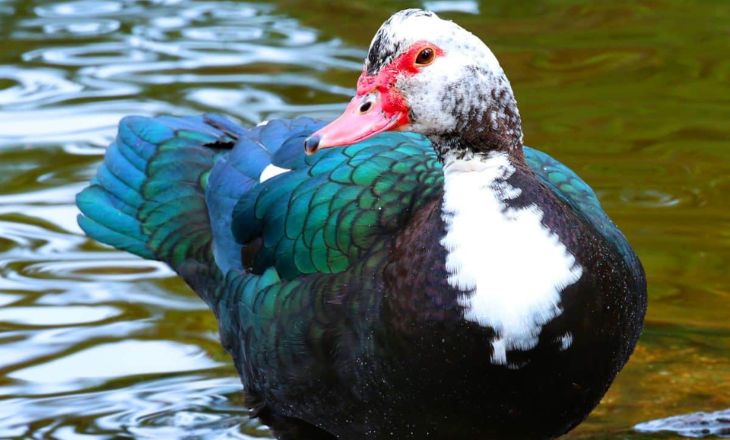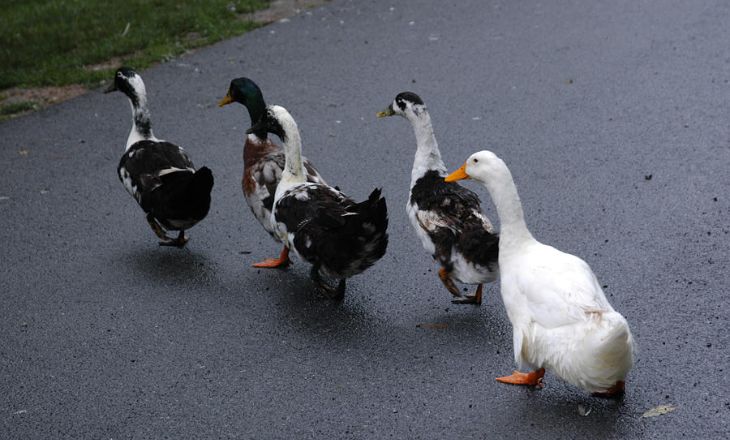Ducks, with their charming waddles and distinctive quacks, have long captured the fascination of nature enthusiasts and casual observers alike. With their endearing behaviors, one particular action often sparks curiosity: the wagging of their tails.
This may seem like a simple movement at first glance, but the reasons behind why do ducks wag their tails are as diverse as they are intriguing.
This article will give seven compelling reasons why ducks engage in this seemingly whimsical behavior, shedding light on the hidden complexities behind this seemingly simple act.
Why Do Ducks Wag Their Tails?
Ducks wagging their tails can communicate various things, depending on the context. When a duck is excited or happy, it may wag its tail as a sign of joy. During mating season, ducks often use tail wagging as a way to attract potential partners. In some cases, tail wagging might not have any specific meaning and could simply be a result of their natural waddling movement.
The swaying of a duck’s body from side to side while walking could indicate that they are trying to maintain their balance. Ducks have a unique walking style that involves their bodies moving in a particular way, which can sometimes lead to the appearance of tail wagging.
Reasons Why Ducks Wag Their Tails
Ducks wag their tails as a way of communicating their emotions and intentions. It is a natural behavior for ducks, and it can indicate various things depending on the context.
For example, a duck may wag its tail when it is excited, happy, or trying to show dominance.

If your pet duck is wagging its tail frequently and seems content and relaxed, there is usually no need to be worried. If the tail wagging is accompanied by other signs of distress or discomfort, such as fluffed feathers or aggressive behavior, it may be a cause for concern. So you have to observe your duck closely and consult with a veterinarian or an experienced duck owner to address any potential issues.
Excitement
Ducks are known for their adorable and animated behavior when they get excited. They often wag their tails, flap their wings, and jump around in joy. This excitement is most commonly triggered by the prospect of food or tasty snacks.
When ducks are well-fed, have had a drink, or see someone they know, they can’t help but show their happiness by shaking their tails.
These cute actions are a way for ducks to express their emotions and communicate with others in their flock. It’s like a little dance that they do to show how content and joyful they are feeling in that moment.
Mating Season
Male ducks engage in vigorous tail-wagging and wing-flapping when a female duck is present as a way to attract her attention and initiate mating. This behavior is part of their flirting and courtship rituals, where the male tries to woo the female for mating.

With the tail-wagging, they also show other specific mating behaviors such as preening, head pumping, and wing flapping are also observed. Mallard ducks, known for mating for life, commonly exhibit these behaviors.
To Shake Off Water
Ducks are semi-aquatic birds, spending a lot of time swimming in water. To dry themselves off after a swim, ducks have a habitual technique of wagging their tails and flapping their wings to shake off water from all parts of their body.
This behavior is similar to how dogs shake themselves dry after getting wet. Ducks need to dry off quickly after swimming to prevent them from getting too cold or waterlogged. The shaking motion helps ducks air-dry faster by removing excess water droplets from their feathers.
Waddling
Ducks have a unique waddling walk style due to their size and body shape. Their clumsy swaying motion is a result of their body shifting from side to side as they walk, which requires them to balance their weight effectively. To maintain stability, ducks often use the wagging of their tail as a balancing mechanism.

Many ducks waddle when they walk, but not all of them exhibit this behavior. Some ducks may have different walking styles that do not require the use of their tail for balance.
To Cool Off
Ducks wagging their tails to cool off after stress and relax is a lesser-known reason for this behavior. When ducks have been through a scary or stressful situation, like escaping a predator, they may wag their tails as a way to calm down. This calming mechanism helps them relax and recover from the intense experience.

Observing ducks wagging their tails after a distressing event can provide insight into their emotional well-being. By engaging in this behavior, ducks can release tension and soothe themselves after a frightening encounter.
Illness
Ducks may exhibit behaviors like shaking their wings and tails, when they are ill, especially in warm weather.
If you notice these signs in your duck, it’s important to take immediate action.
- Isolate the sick duck from the rest of the herd to prevent the spread of illness.
- Consult a veterinarian who can provide proper diagnosis and treatment for your feathered friend.
- If the behavior is persistent and seems unusual, it could indicate an underlying health issue such as wet feathers.
- Bathing the duck and ensuring it is properly dried can help alleviate discomfort and prevent further complications.
You have to not let the ducks swim for extended periods to avoid conditions that may contribute to their illness.
Conclusion
The wagging of a duck’s tail serves various purposes that are crucial for their survival and well-being. From communication to balance and social interactions, these feathered friends use their tails in fascinating ways.
By observing and understanding these behaviors, we can gain a deeper knowledge of why do ducks wag their tails. Let’s continue to observe and learn about the behavior of these charming creatures to further enrich our understanding of the natural world around us.
FAQ’s:
What Does It Mean When A Duck Wags Its Tail?
A duck wags its tail, it usually means that the duck is happy or excited. It’s a sign of contentment and can also indicate that the duck is feeling playful. Ducks may wag their tails while swimming, foraging for food, or interacting with other ducks.
Do All Ducks Wag Their Tails?
Not all ducks wag their tails. Some species of ducks, such as the Northern Pintail, are known for wagging their tails, not all ducks exhibit this behavior. Tail wagging is often a sign of excitement or communication among ducks, but it varies between different species and individual ducks.
Is Tail-Wagging In Ducks Similar To Dogs?
Tail-wagging in ducks is not similar to dogs. Ducks wag their tails mainly for balance and communication, while dogs wag their tails as a sign of emotions like happiness or excitement. Ducks use tail-wagging more for practical purposes rather than emotional expression.
Why Do Duck Opening And Closing Mouth Repeatedly?
Ducks open and close their mouths repeatedly to help them filter out water while feeding. This behavior allows them to separate food from the water they scoop up with their bills.
- Chicken Pecking Order: Top Secrets Of Chicken Flocks (2024) - May 26, 2024
- Top 5 Differences Between Rabbits and Hares - May 25, 2024
- 9 Edible Weeds Likely Growing in Your Yard (2024) - May 23, 2024

